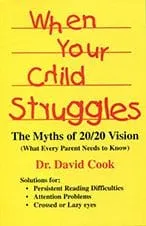Atlanta Amblyopia (Lazy Eye) Vision Therapy
What Is Amblyopia?
Throw away your patch!
Amblyopia, often called “lazy eye,” is a vision development disorder where the brain fails to process input from one eye, despite the eye itself being structurally healthy. This occurs because the brain prioritizes the stronger eye, weakening neural connections to the amblyopic eye over time. Unlike simple refractive errors, amblyopia cannot be fully corrected with glasses alone—it requires targeted therapy to retrain the brain’s visual processing.
Key Facts About Amblyopia:
-
Affects Both Children and Adults: While commonly diagnosed in childhood, amblyopia can persist into adulthood if untreated. Modern research confirms that vision therapy for adults is effective, challenging outdated beliefs that treatment only works before age 6.
-
More Than Just Blurry Vision: Amblyopia disrupts binocular vision (how the eyes work together), reducing depth perception, coordination, and performance in daily tasks like reading or driving.
-
Treatable Without Full-Time Patching: Innovative therapies, such as perceptual learning and 3D vision exercises, stimulate the amblyopic eye in short, focused sessions—proven to outperform traditional hours-long patching.
Three Myths:
1) You cannot treat amblyopia after age 6:
The fact is that amblyopia can be treated in both children and adults. There are gold standard studies showing that significant gains may be found in teenagers. There are numerous case reports of adults being treated by “perceptual learning,” a form of vision therapy. As long ago as 1977, a literature review showed that the chances of getting four lines of improvement (20/80 to 20/70 to 20/60 to 20/50 to 20/40 for example) was 50 percent whether treatment was performed before age 7 or after age 16. At Cook Vision Therapy we have been treating amblyopia for the past 30 years in both children and adults.
2) Full Time Patching is Required:
The fact is that at Cook Vision Therapy we have not full-time patched school age children at home for the last 30 years. It is not necessary. Gold standard studies now show that 6 hours a day of patching is as effective as 12 hours a day. Two hours a day of patching while playing video games is as effective as 6 hours of passive patching. In our office, we prescribe intensive therapy at the very limits of performance for no more than 25 minutes a day (usually 10 minutes).
3) Amblyopia Is a One-eyed Problem:
The fact is that amblyopia is generally a problem of two-eyed seeing. Because the eyes do not work together, the brain reduces seeing in one eye to reduce interference between the two eyes. Patching an eye to improve acuity in one eye generally does not correct the two-eyed problem. As a result, when the patch is no longer worn, the vision is again lost in the “amblyopic” eye.
The real loss with amblyopia, however, is not just that sight is reduced when the good eye is covered. Amblyopia can reduce 3D vision and performance for everything in life. The brain continues to shut off the amblyopia eye even when both eyes are open. Sometimes children become very good at seeing with one eye. Sometimes not. All 7 Visual Abilities remain poor.
Why Choose Evidence-Based Amblyopia Treatment?
At Cook Vision Therapy in Marietta, GA, we combine 30+ years of clinical expertise with cutting-edge research to address amblyopia’s root causes. Our methods focus on:
-
Strengthening Brain-Eye Communication: Short, daily exercises (10–25 minutes) push the amblyopic eye to its performance limits, rebuilding neural pathways.
-
Enhancing 3D Vision: Unlike patching alone, our therapy trains both eyes to work together, improving depth perception and reducing relapse risk.
-
Tailored for All Ages: Gold-standard studies show 50% of patients gain 4 vision lines, whether they’re 7 or 70.
Free Internet Screening and Phone Consultation
If you or your child struggles with reading, call for a Free Phone Consultation. End the struggle!
Frequently Asked Questions
-
Why Treat a Lazy Eye?
In children, Lazy Eye requires immediate treatment to prevent further loss of vision. Such care helps ensure that if something happens to a person’s good eye that person will not be left partially blind. An equally important reason to treat a lazy eye, though, is safety. A person with Lazy Eye may misjudge how far away things are or fail to see things approaching from the side. A long-term Scandinavian study found that children with lazy eye were over fifteen times more likely to suffer accidents to their normal eyes. -
Can a Lazy Eye be Treated After the age of Six?
-
Will a Patch Need To Be Worn?
-
What is amblyopia, and can adults be treated for it?
-
How does amblyopia treatment work without full-time patching?
-
Where can I find amblyopia specialists in Marietta, GA?
-
Why is amblyopia considered a two-eyed problem?
-
Will vision therapy improve 3D vision in amblyopia patients?
-
What are the success rates for amblyopia treatment in teenagers?
-
How long does amblyopia treatment take at Cook Vision Therapy?
Check Out Our Resources
Dr. Cook’s Publications:
- Authored books VISUAL FITNESS and WHEN YOUR CHILD STRUGGLES.
- Published articles in top optometric journals.
- His article “Eyesight, infinity and the human heart” was voted “Best Non-Technical Article” by the Association of Optometric Editors.



